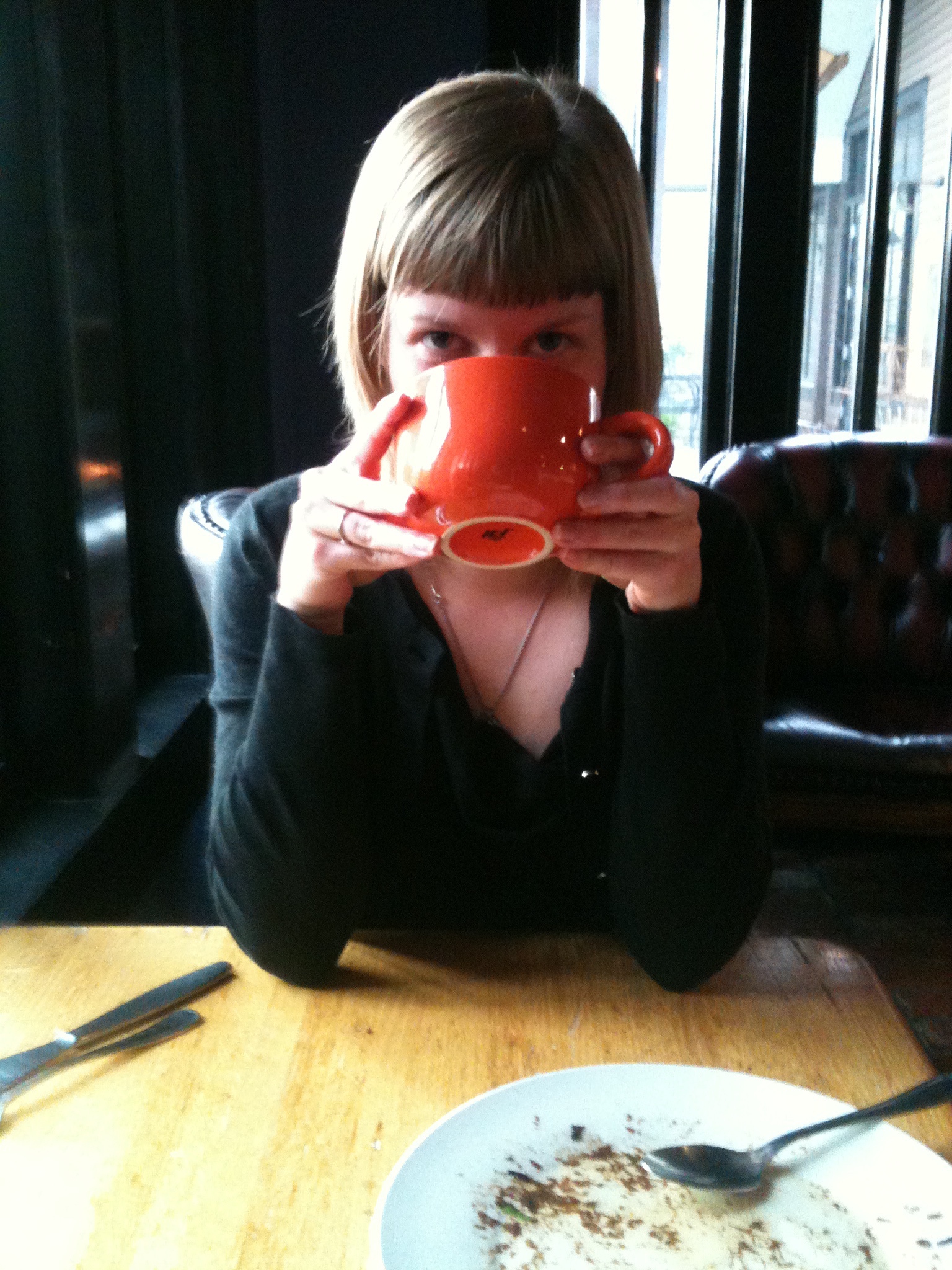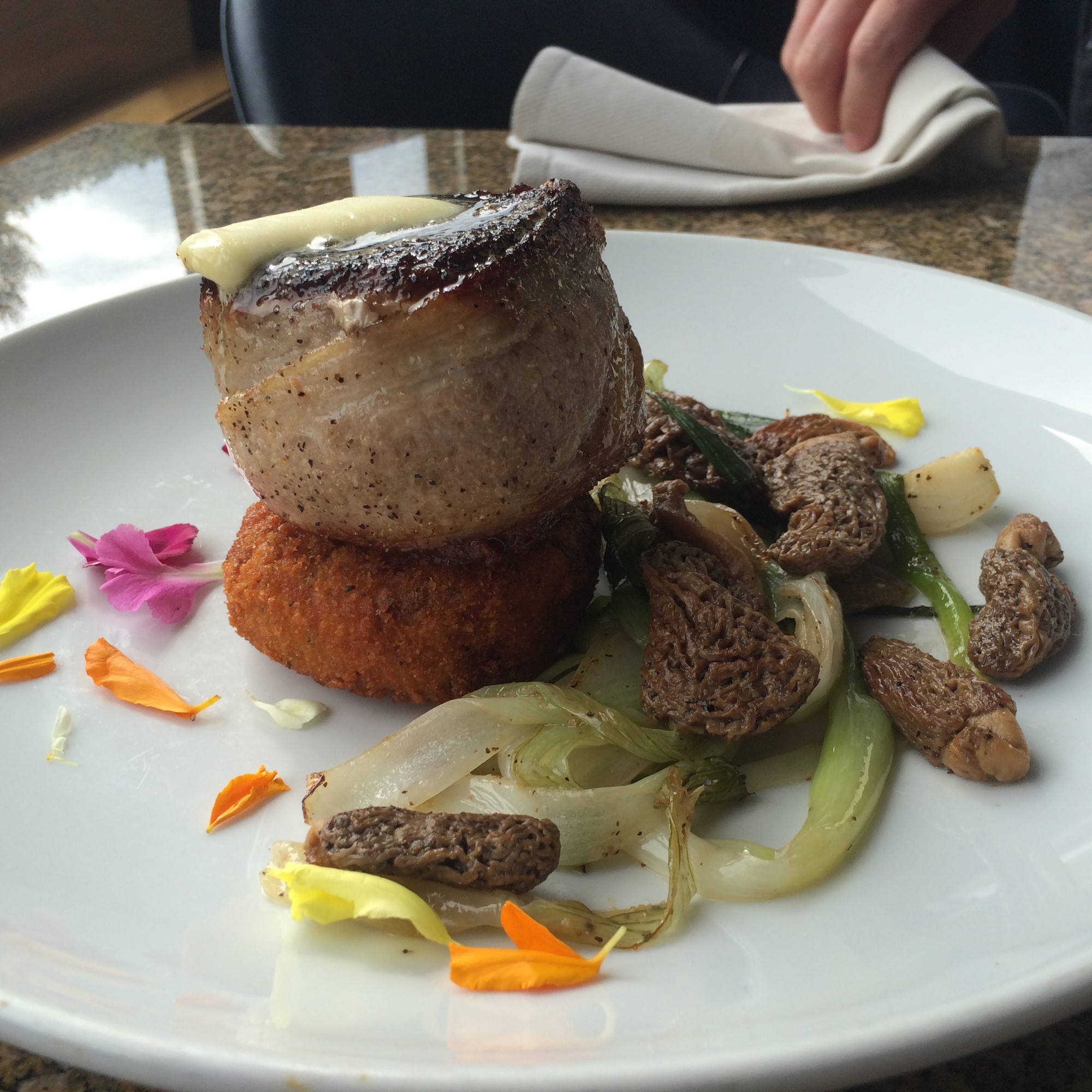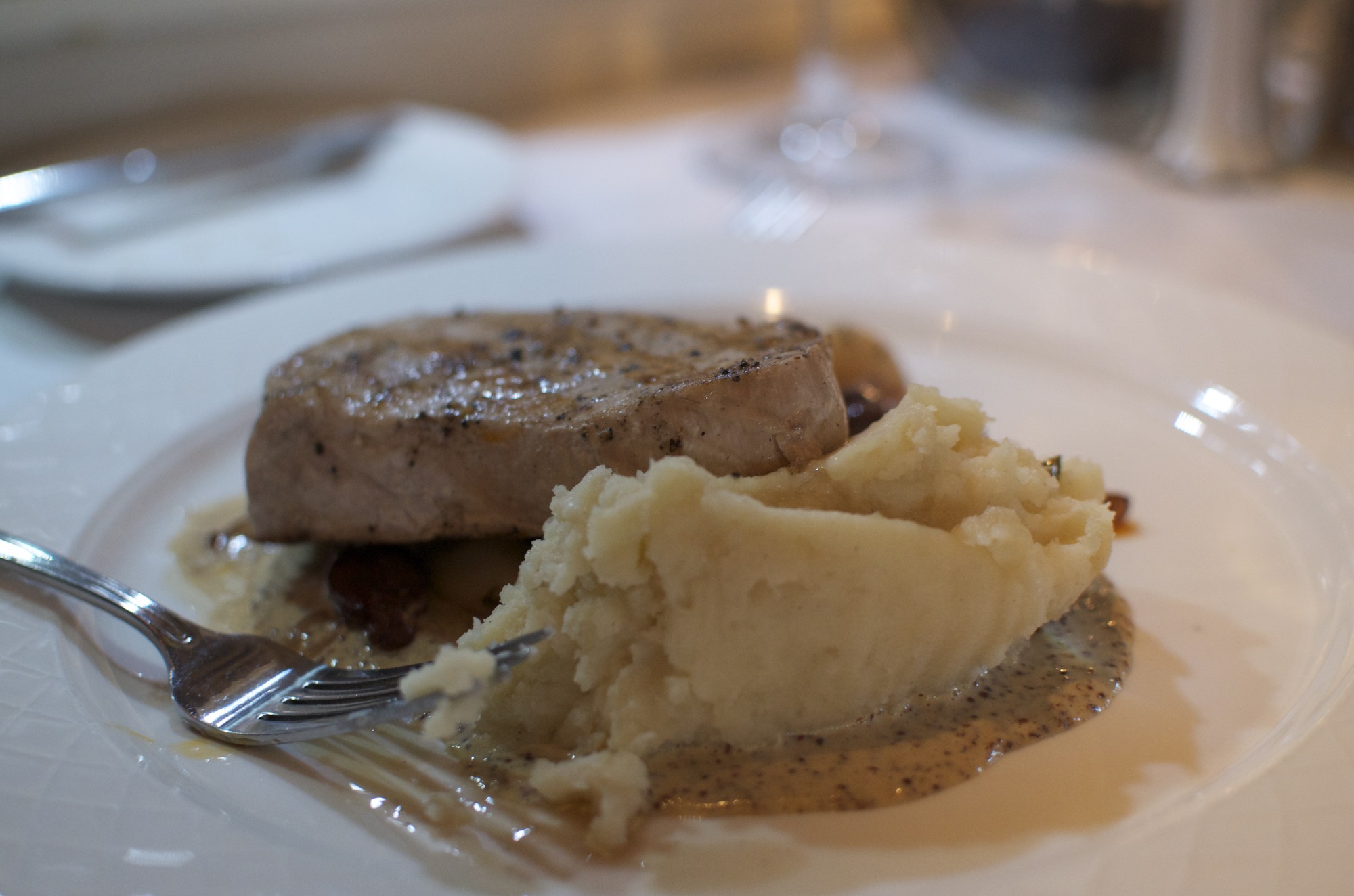Real Talk is our weekly series about the peaks, pitfalls, and perils of the food world. Every week, we’re taking you to the heart of food’s most glamorous (and difficult) projects with the help of our content partner MOO , whose products are all about making dream hustles into beautiful realities ( click here for 20% off your next order!)
From pop-up dinners to pop-tart marketing, hyper-local restaurants to global food empires, this is your peek behind the curtains of food & drink’s dreamiest initiatives and get—you guessed it—the real talk. This week, writer Cara Strickland brings us into the inner folds of food criticism in a medium-sized city on the West Coast. Though there are no disguises, there is lots of cell phone photography and diners’ precious incomes at stake.
_____________________
When I walk in the door, usually with a friend or two, the restaurant staff don’t suspect anything. My friend will give their name for the reservation, if it’s that kind of place, and they will seat us. After more than four years, I don’t worry too much about being carded and recognized or my server running to the kitchen to tell everyone that a critic is in the house. I’ve been told so often that I don’t look like a food critic that I’m starting to believe it myself.
When you think of a food critic, you might begin to picture Anton Ego from Ratatouille , who wielded his power with obvious delight. You might think of Ruth Reichl, who famously wore disguises to avoid being matched to the photo pinned in every restaurant’s kitchen in the greater New York City area during her tenure at the New York Times. I’m about five foot three, and I look younger than my (relatively young) age. I am probably not who you picture.
 A critic at work.
A critic at work.
I’m a critic in a medium-sized city, the second largest in Washington State. Our food scene is growing, but is still not large. For the majority of the people who live here, eating out is a luxury, rather than a recreational sport. When they decide what restaurant they’re going to spend money on, it matters. It is these people that I think of, first and foremost, as I write my reviews.
As I prepare for a review, I start with research. I scout out the menu online to get a lay of the land. Most of the time, I know what I and each of my guests will order before I enter the building (provided the menu is up to date). I look for the interesting, and the downright weird dishes. The ones you might be nervous to try at a new place, with a $25 (or higher) price tag. I’ll be the one ordering the house made bologna and American cheese sandwich (and writing up the definition of American cheese).
Once at the restaurant, I ask my server for recommendations. I pay attention to what they say is popular, and to their own personal favorites. I want to understand what the restaurant is trying to tell me about itself, and whether or not the end result is very successful. I try to have an experience that any customer might have at that same restaurant, if they replicated my choices. I order appetizers, main courses, and dessert. Normally, I’m a little more frugal when eating out, but an expense budget, and the promise of reimbursement, give me a safety net for being adventurous, something I hope to pass on vicariously to my readers.
During a visit, I often have my phone out, texting notes and pictures to the friends that I’m with. In our Instagram-obsessed culture, this looks normal, and helps me capture the details correctly.
 An Instagram-worthy shot from one of the restaurants I reviewed.
An Instagram-worthy shot from one of the restaurants I reviewed.
Over the years, I’ve learned that some people are better companions than others. It can be interesting to see how a restaurant handles a special request to accommodate a particular diet, several of my regulars are vegetarians, or eat gluten-free, which lends an interesting angle to the review. But aside from this, I’m looking for people with adventurous palates who are interested in trying new things. I once brought a boyfriend along on a review of a creperie. He arrived early and ordered before I got there, asking for most of the ingredients of the crepe to be left out. I had to ask him to change his order so that I wasn’t writing about an empty crepe.
When I invite someone to join me on a review, I tell them the rules: we don’t talk about the fact that we are on a review, I make the final decisions on what everyone orders, and I have to try some of everything. Excellent review partners get into the spirit of the thing. They ask questions of the waitstaff, and snap photos of the food and the menu. They talk about the food as if it were a work of art, which of course it is.
Many people think that being a food critic is about being critical, but this is only partly true. For me, being a critic of anything is about paying attention and noticing details. Unless something is truly badly done, I try not to pass judgement. Just because a place isn’t my cup of tea, doesn’t mean that it won’t be a good fit for a portion of my readers. No restaurant will please everyone. My job is to present my experience as clearly as possible. As a critic, my worst fear is that someone will feel misled by one of my reviews.
 This plate might be beautiful to some, blah to others, but I try to be fair either way.
This plate might be beautiful to some, blah to others, but I try to be fair either way.
My secondary audience is the restaurant itself. A thoughtful review is an opportunity to consider what is working and what isn’t, according to someone else. While some restaurants I’ve written about haven’t been thrilled with the critique, others have contacted me to thank me. One chef reached out to let me know that my review gave him the ammunition he needed to change up the desserts at his restaurant. I think that a restaurant deserves to know that members of their staff are comfortable serving something that is obviously burnt, and whether or not their meats are cooked to order, just as much as (or more than) they need to know what they are doing well.
There is a certain amount of awe associated with food critics. Many people assume that I’m eating out for free every night, and that everything I’m consuming is delicious. My publication is monthly, and there are two reviews each month (I usually write one of them). With my budget, I can usually manage to go to the restaurant twice, which doesn’t always feel like enough. Although I recommend some restaurants for review, many of them are assignments. The new and exciting restaurants are not always the best ones, and the food is not always good. On two occasions, I’ve chosen not to cover restaurants at all, not wanting to give them further publicity. On others, I’ve written predominantly negative reviews. On many occasions, I’ve declined to take leftovers home. As a local critic, my job is delightful, but it isn’t lucrative. It adds to my financial picture, but doesn’t cover it.
It is a gift to be paid to eat, and to write about that experience. It is a gift to be able to try new restaurants, and to take my friends out to eat. But like any job, it’s also work. Some parts are tedious, boring, or unpleasant. I’m not off the clock while I eat, the way my guests are. Still, even though I may not be Anton Ego, or Ruth Reichl, I feel pretty lucky, all the same.












